- »Opålitligt« Stockholm, 2025
- »Mmontessorri« Mexico City, 2022
- »ĉielarka aktivec’« Berlin, 2020
- Group Exhibition »ORTHODOX ABSTRACTION (and of course there was poetry)« Berlin, 2020
- »Nueve años caminando en las laderas« Mexico City, 2018
- »*« Stockholm, 2018
- Group Exhibition »Helen Mirra, Allyson Strafella« Berlin, 2016
- »Helen Mirra« Stockholm, 2015
- Group Exhibition »GATHERED FATES curated by Ignasi Aballí« Berlin, 2015
- Group Exhibition »DRAWN« Berlin, 2014
- Group Exhibition »Umstülpung - curated by Günter Umberg« Berlin, 2012
- »Field Index 3« Stockholm, 2011
- Group Exhibition »Summer Exhibition« Stockholm, 2009
- Group Exhibition »DOG STAR MAN« Berlin, 2009
- »Quarry« Stockholm, 2008
- Group Exhibition »Drawing a Tiger« Berlin, 2007
-
Harsha Menon: A So-called Artist: An Interview with Helen MirraBy Harsha Menon Buddhistdoor Global, 2019
-
Peter Eleey and Helen Mirra: dialogue, april – june 2011, Gehend, Argobooks, 2013
-
Friedrich Meschede: Silvester, Transylvania, Käuzchensteig and more beneath the cloud, Helen Mirra im Grunewald, DAAD, Berlin 2006
-
Rena Leinberger: Interview: Helen Mirra, Bridge, Winter/Spring 2003
-
Jen Bervin: Honest Pen Hospital, Sky-wreck, The Renaissance Society at the University of Chicago, 2002
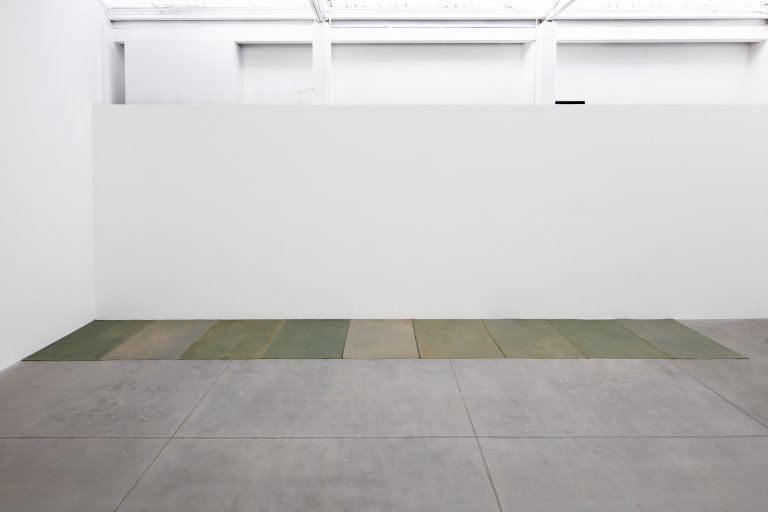
Sidewalk Cover, 1998, Cotton, 152.4 x 1219.2 cm, 60 x 480 in
Hendl Helen Mirra »Mmontessorri«
Mexico City, September 22, 2022 - October 27, 2022
Helen Mirra is a conceptual artist with an ecological ethic and pragmatist philosophy. Central to her practice, she sets off on daily walks with a soft rigor which allows her to reflect on issues of scale, materiality and even pedagogy. She has a sensorial experience of verbal and non-verbal languages, and understands them as reality itself rather than as means to some imagined end. She writes, “I went to a Montessori school as a child. We learned to take care of things. We were free to engage independently or with others. Not sure what the right word is – it wasn’t play exactly, nor work exactly. I was often engaged with objects (blocks, or alphabet tiles on the floor. We rolled out blankets for nap time. We helped each other; for instance, I remember helping another girl with tying her shoelaces. So much pleasure in tying and untying, buttoning and unbuttoning, and moving things from place to place.” Her second solo show in Nordenhake Mexico, “Mmontessorri” collects works spanning from 1998 to 2021 which together bring forth a subtle conversation with and within the natural and geometric world.
In “Sidewalk cover” (1998), Mirra uses the Montessori and minimalist recourse of the grid in a green woven cotton textile to create an almost infrathin sculpture which matches the sidewalk on which we walk and so often overlook. Thus, she brings attention to the scene of modern-day urban walking on concrete lines, which interrupt, obscure and erase green space. The sound recording “Field Geometry” (2000) takes the initial system of kindergarten as developed by Friedrich Froebel in the 1830s and musicalizes it, as a series of composed ‘songs’ that mix the sounds of kindergarten object-based activities with parallel, synaesthetic guitar playing. Ideal early child education, as imagined by Froebel, is an experiential system whereby different subjects are introduced in ways which resemble the systematic, interrelated existence of crystals and forests - that is, where there is a constant gestalt shift between the whole and the parts. In the beginning of the 20th century, one of Maria Montessori’s great contributions to the field was to enlarge the tactile-object aspects and expand attention to experimentation, while conserving the commitment to inter- and co-relations. Drawn to the simplest of approaches and materials, Mirra is constantly in a state of exploration. “Sky-wreck” (2001) is another excellent early example of this. Modeled on the architecture of a geodesic dome, it is a map of sorts, triangular patches making larger patches for a small section of the sky. It is a translation of the sky —that highly metaphorical roof under which life and consciousness happens¬¬— into a material cloth limit. Mirra´s “Ronda Baro de Linajo” (2021) makes a direct reference to legendary trickster André Cadere’s round bars of wood from the 1970s. Cadere’s bars purposefully exist in a state of ambiguity regarding their legitimacy as art objects. More reminiscent of a child’s toy than of ‘proper’ sculpture, Cadere’s portable bars challenged existing notions surrounding art exhibition, and he carried and displayed them more often in public settings such as bus stops or cafés than in galleries and museums. Mirra´s riff, made with spools of undyed linen thread, trades Cadere’s patterns of color for chance-determined changes in volume and a palpable sense of transferable weight.
These primary yet complex works blur the borders of what we know and where we learn, and question the notion that limits are limitations, be they physical, linguistic, epistemological or other.
Helen Mirra was born in Rochester, New York in 1970 and lives in West Marin, California. Major solo exhibitions include "Du vent au vent" at the Rochechouart Museum (2022), "Nueve años caminado en las laderas" at the Museo de Arte Zapopan (MAZ), Jalisco MX (2020), “gehend” which was held at three venues: Haus Konstruktiv, Zürich (2012), KW Institute for Contemporary Art, Berlin, and Bonner Kunstverein (both 2011), “Declining Interval Lands” at the Whitney Museum in New York (2002); and “Sky-wreck” at the Renaissance Society at the University of Chicago (2001). A fifteen-year survey (1996-2010) of her work was presented at Culturgest in Lisbon in 2014. In 2015 she participated in the 12th Havana Biennial with a month-long walking project. She also participated in the 30th São Paulo Biennial (2012) and the 50th Venice Biennial (2003). Mirra has been awarded various awards, including DAAD in Berlin (2005/2006), OCA in Oslo (2007/08), IASPIS in Stockholm (2011), and the Guggenheim Fellowship (2020).
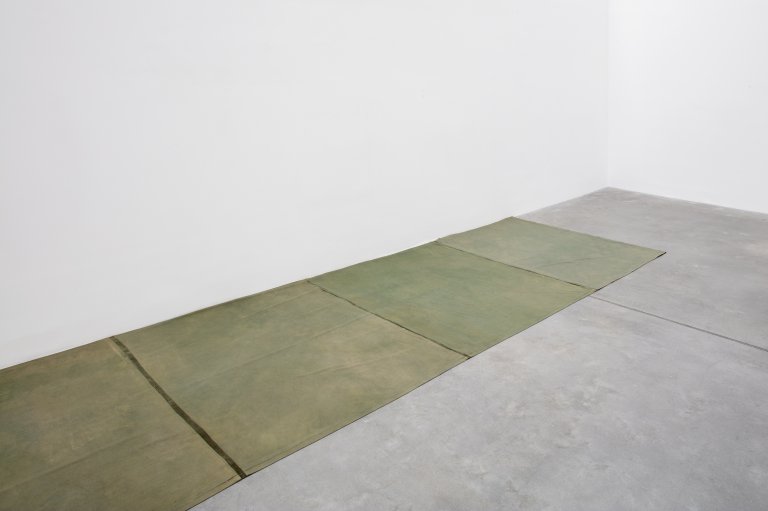
Sidewalk Cover, 1998, Cotton, 152.4 x 1219.2 cm, 60 x 480 in
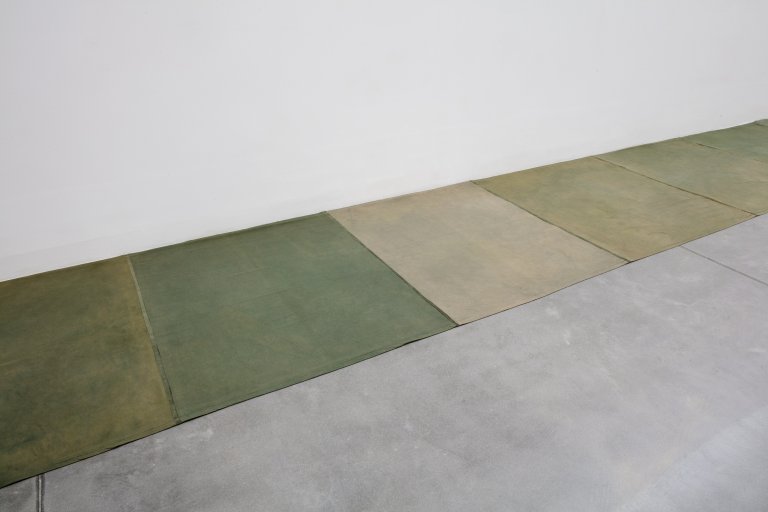
Sidewalk Cover, 1998, Cotton, 152.4 x 1219.2 cm, 60 x 480 in
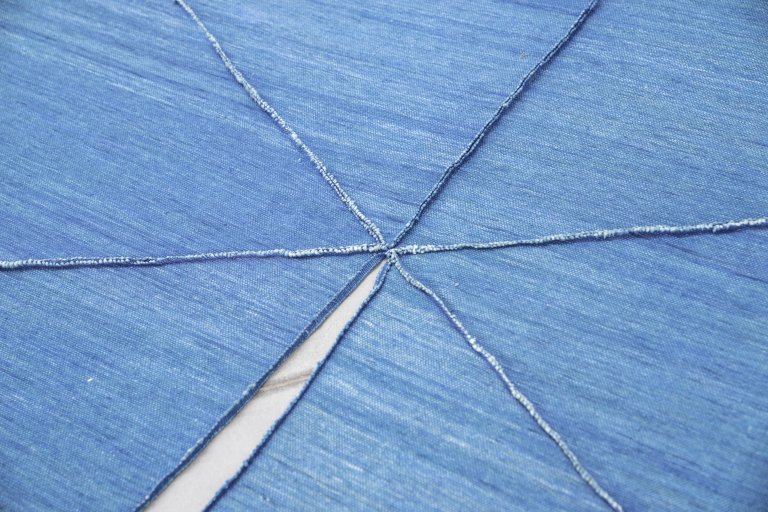
Sky-wreck, eastern northern 1/2% , 2000, handwoven indigo dyed cotton, 320 x 290 cm, 126 x 114 1/8 in
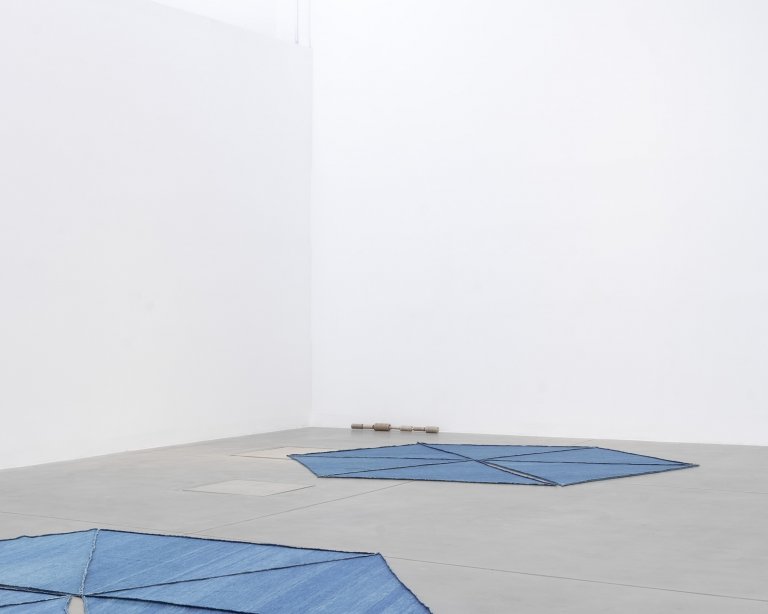
Sky-wreck, eastern northern 1/2% , 2000, handwoven indigo dyed cotton, 320 x 290 cm, 126 x 114 1/8 in
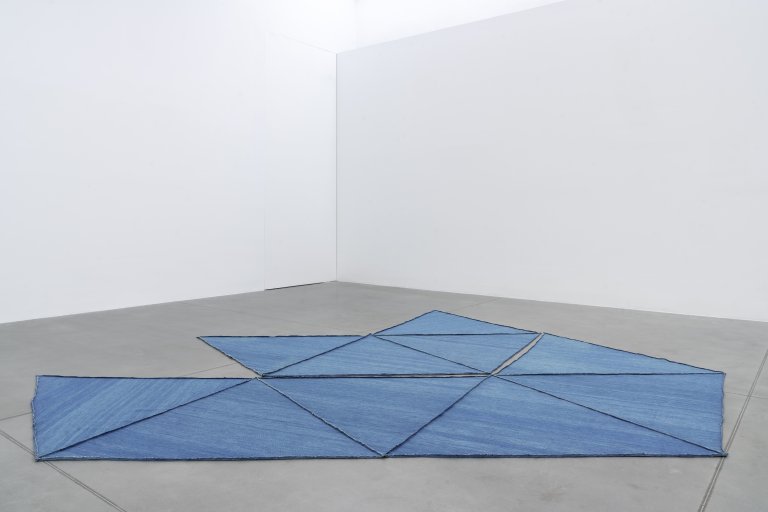
Sky-wreck, northeastern 1/2% & 1/3%, 2000, handwoven indigo dyed cotton, 440 x 600 cm, 173 1/4 x 236 1/4 in
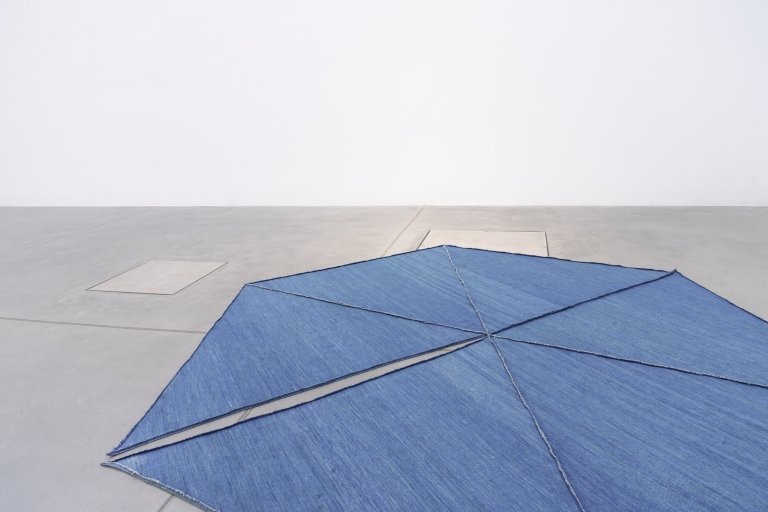
Sky-wreck, eastern northern 1/2% , 2000, handwoven indigo dyed cotton, 320 x 290 cm, 126 x 114 1/8 in